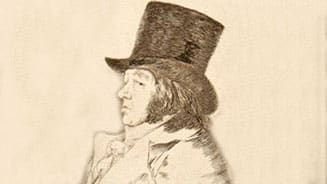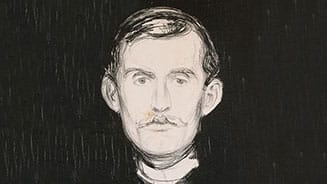- Turning visitors into leads.
GRAPHICS IN ANTWERP
Antwerp, as the location of the city's first museum dedicated exclusively to graphics, was deliberately chosen. After all, the city is not only a hub in the north-south axis, it is also a contemporary centre of culture. Furthermore, there has been a tradition of printmaking in Antwerp for centuries. Artists like Pieter Breugel the Elder and his descendants, but also the printers Christoffel Plantijn and Jan Moretus bear witness to this. Printmaking provided the opportunity to use art to convey a message, with or without a critical undertone. In particular, the extensive and unique collection of Museum De Reede includes work by three masters of graphic art:
Francisco Goya, Félicien Rops and Edvard Munch.
THE COLLECTION
The collection consists of works on paper: lithographs, engravings, etchings, wood prints, and drawings by more than 80 artists from seven countries on three continents and spans five centuries from the 17th to the 21st. At the heart of the collection are some 240 works by three of the greatest engravers of all time. Three artists each target humans. Francisco Goya and Félicien Rops the fellow man, dissecting society, Edvard Munch himself, turning inside out.

Francisco Goya
What makes Goya Goya unique is not that he is considered the 'father of modern art'. Forerunner of all later movements, from the romantic school to cubism. What sets him apart is his critique of the changing world he lived in, from the 18th to the 19th century. With his graphic art, he aimed to reach a wide audience. To hold up a mirror, not to entertain. That much of his work was only printed long after his death underlines the timelessness of his creative power.

Félicien Rops
To put Rops down in 'one brushstroke' is impossible. He is too multi-dimensional for this. If it must be, 'a man, not afraid to live'. His self-coined motto "Aultre ne veulx estre" - "I don't want to be another" sums it up. His sincerity as an artist, and his individuality, through it all, is what makes man Rops stand out above uniformity and convention. Compromise or political correctness did not exist for him. This shines through in his work and makes him "modern" to this day.

Edvard Munch
Barely a thin membrane separates life from death in Edvard Munch's art. The experience of death early in his life, his mother and then his sister, imbued him forever with the fragility of life. In this realization, all his emotions find their origin and thus manifest in his work. Death was not his 'idol'. He sought the connection of life and death, something he himself described as 'metabolism'. His attitude to life from this thought is what brought Munch to the heights of art he achieved.
